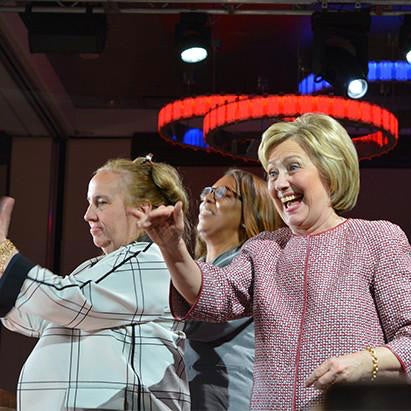On November 8, 2016, Hillary Rodham Clinton won the popular vote for President of the United States by a reported 2,300,000 votes (and counting), but lost the election based on her 232 electoral votes in contrast to Donald Trump’s 306. It was a blow for those rooting for her not just because they believed she was the better candidate but also because she would have broken the glass ceiling to become the first woman President.
Her success in winning the Democratic Party nomination in 2016 followed a previous unsuccessful bid in 2008, when she lost to Barack Obama despite winning more votes than any primary candidate in U.S. history. In 2008, Clinton became the first woman to be listed as a presidential candidate in every primary and caucus nationwide.
Interestingly, although not much discussed, the quest for a female U.S. President began many years ago, long before HRC. Did you wonder why the media were careful to say that she was the first female U.S. presidential nominee of a major party?
That’s because there have actually been other women seeking that highest office for many years. Among that small group several received nominations, though mostly on the fringe of politics. New York women feature prominently in that story — not unexpectedly, given that New York is the birthplace of the Suffrage Movement.

In 1872, Victoria Woodhull, born in Ohio but living in New York City at the time, became the first woman to run as a candidate for President of the United States. Woodhull was a colorful and controversial figure. Among her precedent setting achievements she and her sister Tennessee Claflin were the first women to operate a brokerage firm on Wall Street. She also was among the first women to found a newspaper, was a political activist, and was a one-time spiritualist and healer. She became the candidate for the Equal Rights Party with Frederick Douglas as her Vice Presidential running mate, on a platform that supported women's suffrage and equal rights, labor reform, and “free love,” advocating for the freedom to marry, divorce, and bear children without government interference.
Her candidacy was both sensational and contentious for reasons beyond her policy proposals. In addition to being far ahead of her time — she ran for office 48 years before women had the right to vote (the 19th Amendment was ratified on August 18, 1920) — she was younger than the constitutionally mandated age of 35 for Presidential contenders, though she turned 35 six months after she would have been inaugurated. Additionally, Woodhull was arrested on obscenity charges just days before the election because she published a story alleging adultery between the esteemed minister Henry Ward Beecher and Elizabeth Tilton. She did not earn any electoral votes, though she received some popular votes. According to Wikipedia, “[w]hile she didn't receive any electoral votes, she did receive some popular votes.
In 1884 and again in 1888, Royalton, N.Y. native Belva Lockwood ran for President of the United States on the National Equal Rights Party. Lockwood, who overcame a number of personal and professional obstacles, became not just one of the first female lawyers in the United States, but also the first woman member of the United States Supreme Court bar. She worked to secure women’s suffrage, property law reforms, equal pay for equal work, and world peace. That she received any votes is astounding, given that at the time women still had not been granted the right to vote; we can be thankful for those progressive male voters.
According to Politico, “[o]ther women... have launched runs for the presidency since, but nearly a century passed between Woodhull’s run and the first woman to vie for the nomination of a major party. Maine Sen. Margaret Chase Smith tried in vain for the Republican nomination in 1964; New York Rep. Shirley Chisholm tried for the Democratic nomination in 1972, as did Rep. Patsy Mink from Hawaii. In more recent years, Colorado Rep. Patricia Schroeder, cabinet secretary and later North Carolina Sen. Elizabeth Dole, Illinois Sen. Carol Moseley Braun, and Minnesota Rep. Michele Bachman would compete for the nomination of the Republican or Democratic parties.”
2016 proved to be a banner year for female contenders for President of the United States. In addition to Secretary Clinton on the Democratic side of the aisle, Dr. Jill Stein, a physician, activist, and politician on the presidential ballot in 2012 was again the presidential candidate of The Green Party. And across the aisle, Carly Fiorina also competed, albeit unsuccessfully, with nearly 20 male competitors for the Republican nomination.
With the proliferation of candidates across party lines, perhaps that ceiling will be broken sooner than it seems might be possible at this moment in history. The quest continues, and we may well find that the future lies within the pool of New York State's talent.
Lead image: Hillary Rodham Clinton, pictured with Manhattan Borough President Gale Brewer and Public Advocate for the City of New York Tish James, on April 19, 2016, the night she won the New York State Democratic Presidential Primary. | Photo Credit: Christine Murphy.


Leave a comment